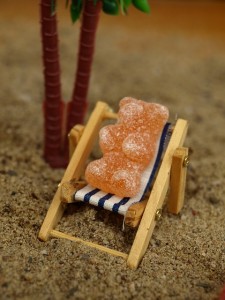How To Set Up The First Sandtray Session
 In my last blog I wrote about Sandtray Therapy (http://www.ccpa-accp.ca/blog/?p=4171) and how I find it is such a wonderful therapeutic technique to help heal traumatic events and related mental health issues. I sometimes hear therapists that are new to using Sandtray say that clients look at a tray of sand and tiny figures and feel the idea of playing in the sand is “weird” or childish. So I wanted to outline what a Sandtray session looks like and present tips on how to present it to clients.
In my last blog I wrote about Sandtray Therapy (http://www.ccpa-accp.ca/blog/?p=4171) and how I find it is such a wonderful therapeutic technique to help heal traumatic events and related mental health issues. I sometimes hear therapists that are new to using Sandtray say that clients look at a tray of sand and tiny figures and feel the idea of playing in the sand is “weird” or childish. So I wanted to outline what a Sandtray session looks like and present tips on how to present it to clients.
For those of you who know little about Sandtray Therapy, Picture it…you walk into a room that has two comfortable chairs and a small table between them. On that small table is a tray or large bowl with sand in it. On a nearby table or placed on shelves are hundreds of tiny figures. These figures are a combination of everyday items that are miniscule ex. A house, chairs, animals…these figures also include mythical ones ex. mermaids and unicorns…and small sculptures that are more abstract. Some of these figures will fascinate you and some will feel odd or meaningless.
When I present the idea of a Sandtray session to a client, I have already seen the client a few times and facilitated both a full assessment as well as feel they trust our initial connection. The work has slowly begun. The only exception to this is if a client reads on my website about Sandtray Therapy and specifically contacts me to do this only. I also find that as a therapist you need to be excited about and believe in Sandtray as a healing modality. If you feel odd about it, your clients will pick up on it as well. I give a lot of permission to a client to slowly consider it as a therapeutic possibility. My clients will see the Sandtray supplies in a corner of my office during sessions, even if they are not interested in it at a given time (although the figures themselves are obscured for reasons too complicated to explain here). I also tell clients when they first meet me that this is a service I can offer if they are interested. This allows simply getting used to the idea of Sandtray as our sessions begin. If you have a client that struggles with talking about their feelings, this is great way to suggest a method to process deeply without having to be so verbal. This is why I find male clients and Aboriginal people gravitate to Sandtray. It is also well loved by clients that find connecting with nature is important to their mental health.
Here is a bit of an example of what I say to a client….
“Given that you have been talking about feeling ‘stuck’ in making life decisions, I wanted to suggest Sandtray as an option that I truly feel you may find helpful. No pressure, you can just think about it if you wish. I find it can feel odd at first, but once you have had completed one tray I think you will either love it or see the effect it can have on your life, fairly quickly. If you decide it is not for you, it is only one session and we can try something else instead.”
The immediate set up…
“So get your hands in the sand for a few minutes. When you are ready simply take this small basket and walk around the room, choosing your figures. You choose figures largely based on intuition. So choose the figures you have a strong reaction to, love or hate. Then bring them to the tray and place them in any way you wish to. There is no right or wrong way. And then we are going to chat about what you’ve created.”
I have found the majority of clients I work with love Sandtray once they try it. Other clients are surprised at how fast they start feeling “unstuck” in an area of their lives. Have fun with it! Stay tuned. My next blog will be about creating safety with clients using Sandtray, before starting intense trauma memory processing.
*The views expressed by our authors are personal opinions and do not necessarily reflect the views of the CCPA